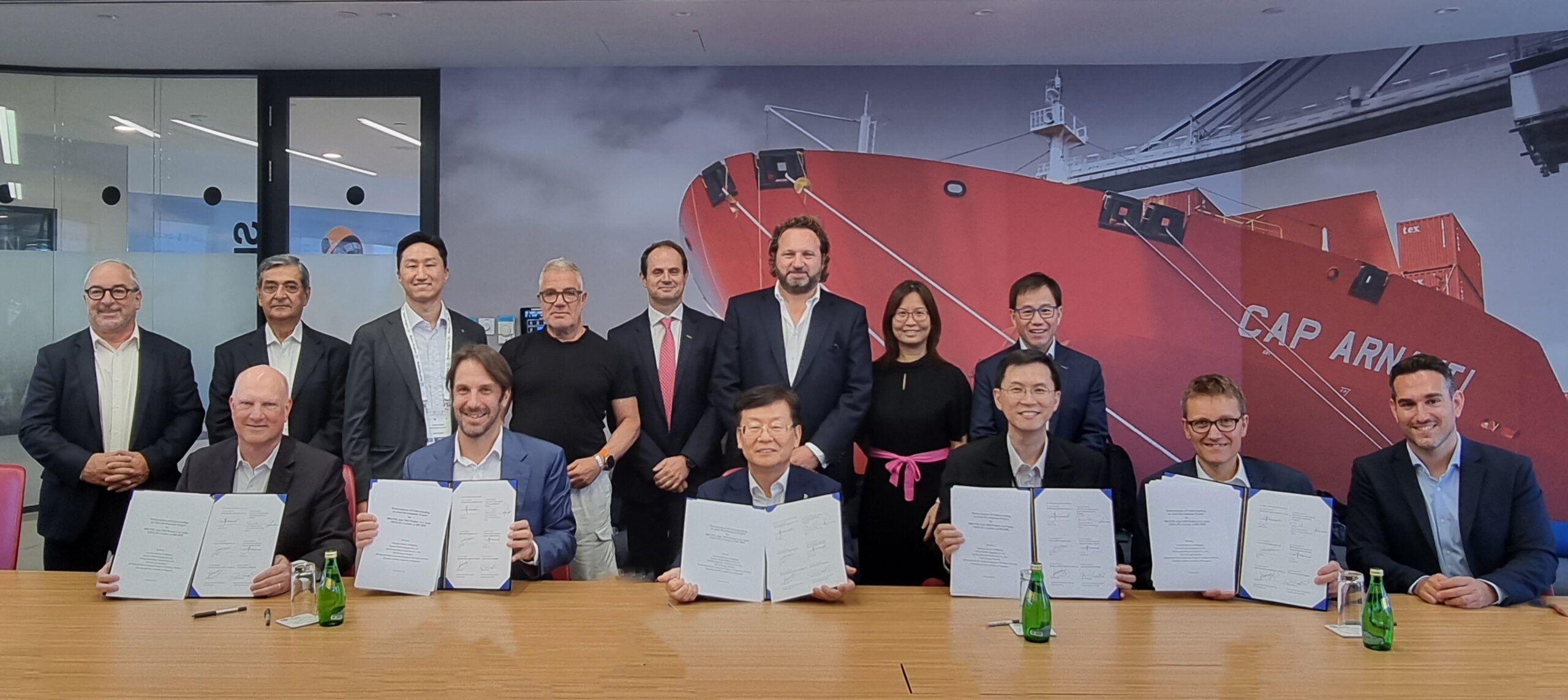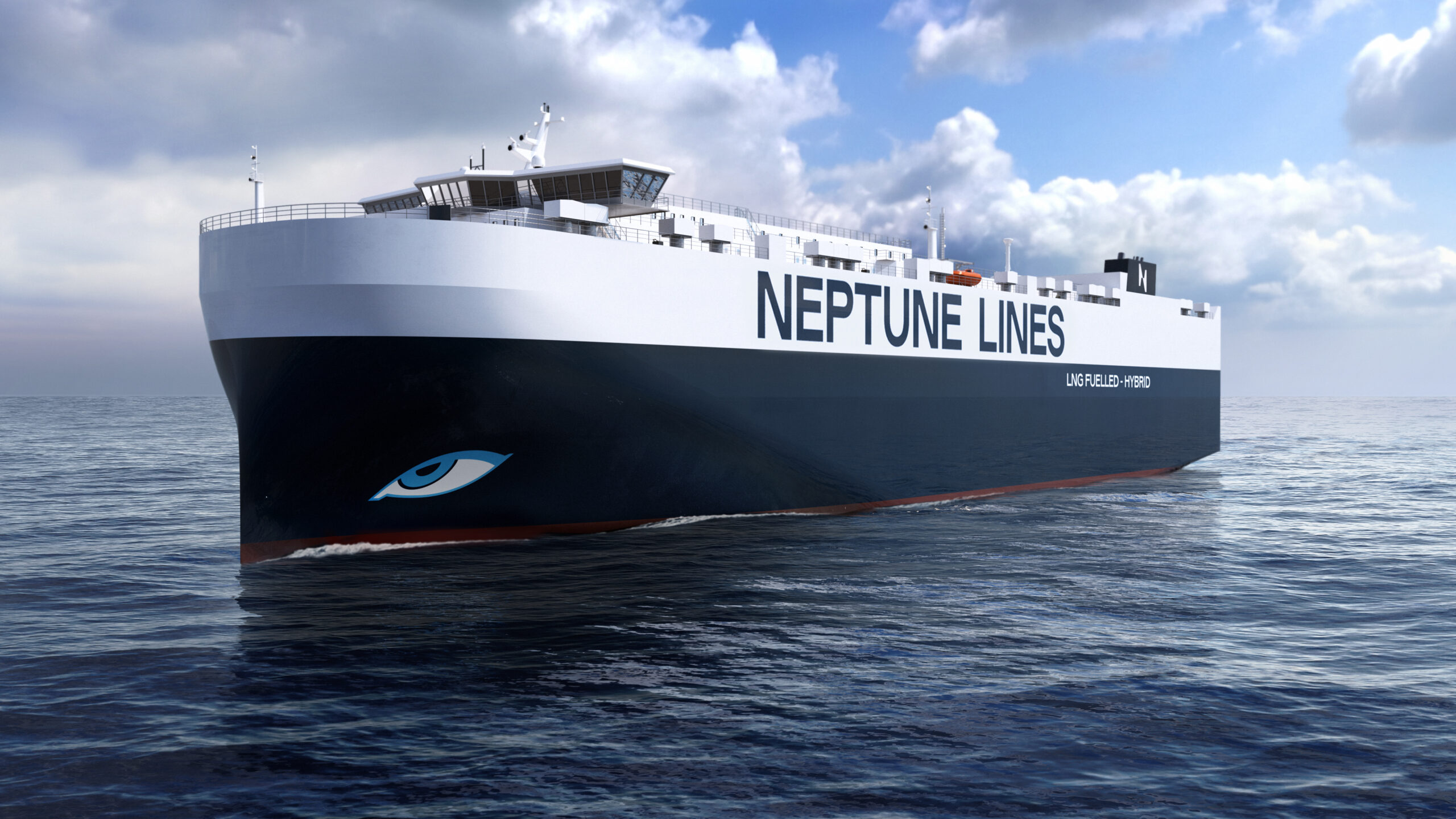Press Release: NYK is delighted to announce the order of its first two liquefied petroleum gas (LPG) dual-fueled very large gas carriers (VLGCs) to Kawasaki Heavy Industries Ltd. (KHI; president: Yasuhiko Hashimoto; headquarters: Minato-ku, Tokyo). Both ships will be built at the KHI Sakaide Works shipyard and are set for delivery in 2022.
When LPG is used as fuel, exhaust gas from the ordered VLGCs will contain at least 85% less sulfur oxide (SOx) and 15% less carbon dioxide (CO2) compared to conventional VLGCs equipped with fuel-oil engines.
These new VLGCs will comply not only with the SOx Global Cap regulations* that were tightened from January 2020 but also with the EEDI phase 3 requirements.**
In addition, by equipping the ships with LPG tanks on deck, it will be possible to load LPG for fuel separately from the LPG cargo. Having the LPG tanks on deck extends the cruising range of the vessel when LPG fuel is used even though the size of the vessel remains the same.
In the future, by promoting the development of an eco-friendly fleet, NYK will provide customers with a low-carbon transportation mode and contribute to the reduction of environmental loads and the realization of a sustainable global society.
– Outline of Vessel
Length overall: approx. 230 meters
Breadth: 37.20 meters
Depth: 21.90 meters
Summer draft: 11.60 meters
Tank capacity: approx. 86,500 cubic meters (includes the on-deck tank capacity of 2,500 cubic meters)
On February 3, 2021, NYK announced the NYK Group ESG Story,*** which aims to further integrate ESG into the company’s management strategy and promotes activities that contribute to the achievement of the SDGs (Sustainable Development Goals) by providing cleaner transportation services, which includes the construction of these LPG dual-fueled VLGCs. To strongly promote ESG management, the NYK Group will encourage new value creation as a sustainable solution provider through a business strategy that responds to climate change.

* SOx Global Cap regulations
SOx emission regulations based on the 2008 amendment of the 1997 Protocol on Ship Pollution Prevention (Annex VI of the MARPOL Convention). Since January 1, 2020, the allowable limit of sulfur in ship fuel oil has been reduced from 3.5% to 0.5%.
** EEDI requirements
Regulations on the energy efficiency of ships based on the 2013 revision of the International Convention on the Prevention of Ship Pollution (1997 Protocol adding Annex VI to the MARPOL Convention). The EEDI (Energy Efficiency Design Index) is the number of grams of carbon dioxide (CO2) required to carry 1 ton of cargo 1 mile, and the reduction rate from the baseline will be gradually enhanced. VLGC and LNG carrier ship-types will be required to implement reductions of 30% by 2025 (Phase 3).
*** NYK Group ESG Story
A guideline detailing concrete efforts to integrate ESG into management strategies of the NYK Group. Details can be found in the related press release.
https://www.nyk.com/news/2021/esg-story_01.html (Japanese version)
Header image: LPG dual-fueled VLGC

































